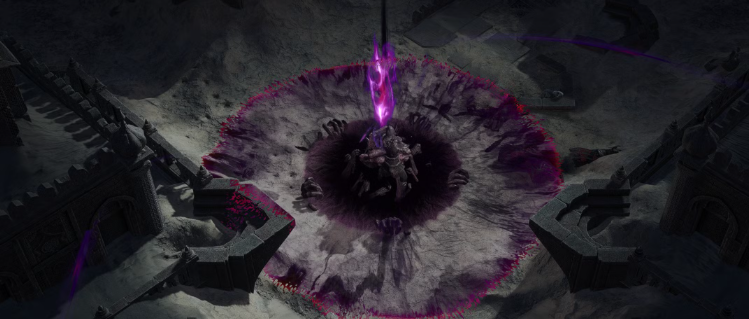MMOEXP POE2:A Guide to Damage Scaling

Path of Exile 2 (PoE 2) is a game that thrives on its complexity, and damage scaling is one of the most intricate systems that players must understand in order to build effective characters. Whether you’re an experienced Exile or a newcomer diving into the game's vast mechanics, understanding how damage scales and how to maximize it is key to POE 2 Currency progressing through the game, especially in the brutal endgame.
In this guide, we'll break down the fundamentals of damage scaling in PoE 2, exploring the core mechanics that contribute to your overall damage output. From base damage modifiers to advanced scaling techniques, we’ll cover the ins and outs of how to optimize your character for high damage in the most effective ways possible.
What is Damage Scaling?
Damage Scaling refers to how different stats, modifiers, and mechanics affect the overall damage output of your character. This process involves applying various modifiers to your base damage to increase its effectiveness. It’s not just about raw damage numbers—scaling involves considering a combination of factors, such as attack speed, critical chance, elemental scaling, damage over time, and damage type multipliers.
In simple terms, damage scaling means how to increase the raw damage of your abilities, whether it's through added multipliers, increased damage per hit, or by improving your abilities' effectiveness over time.
Core Mechanics of Damage Scaling in PoE 2
There are several key systems in PoE 2 that contribute to how your damage scales. These include Base Damage, Global Damage Modifiers, and specific scaling for each damage type (such as Physical, Fire, Cold, Lightning, Chaos, and Elemental).
Let’s break down the core concepts:
1. Base Damage
Every skill and weapon in PoE 2 has a base damage value. This value is multiplied by various modifiers to determine the actual damage output.
Weapon Damage: For physical skills that scale off weapon damage (like Cleave, Whirlwind, or Cyclone), your weapon’s base damage (or weapon DPS) is the starting point for calculating how much damage is dealt. Different types of weapons will scale differently, with two-handed weapons typically offering higher base damage than one-handed weapons.
Spell Base Damage: For spells, the base damage is typically lower, but it is then amplified through modifiers, such as spell damage, elemental damage, or critical chance.
Damage Type Base: For elemental damage (e.g., fire, cold, lightning) or chaos damage, the base damage will depend on the type of skill or spell you're using. Some skills are tied to specific elements, while others can be modified to deal multiple damage types.
2. Global Damage Modifiers
These modifiers apply to all types of damage, regardless of whether it’s physical, elemental, or chaos damage. Understanding these modifiers is crucial because they have a global impact on your overall damage output. Some examples of global modifiers include:
% Increased Damage: This is a flat percentage increase to your total damage. It applies to all damage types and is one of the most important stats for boosting your damage across the board.
% More Damage: This is a more powerful modifier than % increased damage, as it multiplies your total damage rather than adding to it. For example, if you have 100% more damage, this will double your total damage.
% Critical Damage: This increases your damage when you land a critical strike. Crit-focused builds often rely on critical damage modifiers to substantially boost their damage.
Penetration: Elemental penetration or Chaos penetration reduces the enemy's resistances, allowing your damage to bypass their defenses more effectively.
Double Damage: This is a powerful multiplier that has a chance to deal double the damage on a hit.
These modifiers are often found on the passive skill tree, items, and ascendancies, and they work on all damage types, making them essential for scaling overall damage output.
3. Skill-Specific Modifiers
While global modifiers increase overall damage, many builds are optimized through skill-specific damage scaling. These modifiers apply only to specific skills and can vary greatly depending on the damage type or mechanic. Some examples include:
Attack Speed: For attack-based skills, attack speed significantly impacts damage scaling. The faster you can hit, the more damage you deal over time. Increasing attack speed is crucial for skills like Cyclone, Lacerate, or Blade Flurry.
Spell Speed: Similar to attack speed but for spellcasting. The faster your spells cast, the more damage you can deal in a given time frame. Certain builds rely on casting speed to scale damage, especially when combined with high crit chance.
Hits Per Second: For many melee or ranged attacks, scaling hits per second (the number of times your character hits in one second) is important. Flurry, Viper Strike, and Frenzy all have effects tied to how many hits you land.
Damage Over Time: Some skills, such as Poison, Burning, and Bleed, deal damage over time rather than instantly. These skills benefit greatly from scaling damage over time (DoT) modifiers, which increase the potency of each tick of damage.
Area of Effect (AoE): Many skills scale with AoE damage. This allows you to deal more damage to multiple enemies at once, rather than focusing on a cheap POE 2 Currency single target. Skills like Fireball or Storm Call are examples of this.
- Vibnix Blog
- Politics
- News
- Liberia News
- Entertainment
- Technology
- التعليم
- Art
- Causes
- Crafts
- Dance
- Drinks
- Film
- Fitness
- Food
- الألعاب
- Gardening
- Health
- الرئيسية
- Literature
- Music
- Networking
- أخرى
- Party
- Religion
- Shopping
- Sports
- Theater
- Wellness


